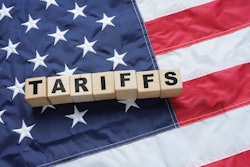
With U.S. ecommerce revenue forecasted to increase 37% between 2025-2029 to an estimated peak of $1.8 trillion, retailers and brands have reason to be optimistic. Yet this upward growth trajectory is a mixed blessing: with more e-commerce sales fueling more parcel deliveries, porch pirates are taking advantage—and that spells trouble for retailers.
According to Pitney Bowes’ latest Parcel Shipping Index Report, 22.37 billion parcels—a mind-boggling 710 parcels generated every second—were shipped in the United States in 2024, up 3.4% from 2023. While these packages may have successfully arrived at their destinations, not all parcels ended up in the hands of their intended recipients.
Thieves targeting packages left on doorsteps stole 120.5 million parcels from porches across the United States in 2023, costing American consumers $16 billion and damaging the reputations—and bottom lines—of ecommerce businesses.
Shaken confidence
Understandably, consumers are frustrated and anxious about the security of their purchases. One in four Americans have been victimized by porch pirates at some point in their lives and 49% are worried that their ecommerce orders will get stolen, with one-third of consumers avoiding buying expensive items online due to package theft concerns.
In light of the growing porch piracy threat, it’s no surprise that a recent home delivery survey found that security was consumers’ top concern, with 81% of respondents ranking the security of their delivery as “extremely important.” With 66% of consumers experiencing issues with home delivery, from late deliveries to wayward parcels, retailers cannot afford to let parcel theft erode consumer confidence even further.
While delivery efficiency and on-time delivery performance are predictably top of mind for shippers, safeguarding the last mile has become a strategic priority for ensuring a positive customer experience and driving profitability, especially given the bottom-line impact of the recent tariff volatility and rising costs.
Determined to mitigate the impact of porch piracy, ecommerce leaders are implementing targeted operational strategies and final-mile tactics to enhance delivery security, reduce parcel thefts, and minimize the cost of replacing stolen goods and providing refunds.
1. Delivery flexibility
Putting control in the hands of the customer is a key competitive differentiator, reducing buyers’ worries about losing purchases to porch pirates and creating a frictionless customer experience that fosters brand loyalty. An automated delivery appointment scheduling solution, which continually optimizes deliveries and considers each order at the point of sale, gives customers the opportunity to select a convenient delivery slot that accommodates their schedules. By offering customers the flexibility to choose, they are more likely to be at home to receive the package, eliminating the risk of parcel theft.
Plus, retailers can extend consumer choice and control through a range of delivery options, from allowing customers to reschedule deliveries and reroute deliveries to a trusted neighbor to directing deliveries to a parcel lock box on their porch or specifying alternate secure drop-off locations such as their workplace.
2. Delivery visibility
GPS-enabled real-time mobile tracking and proof of delivery (POD) mitigates the risk of package theft by ensuring customers are automatically notified of delivery status updates throughout the last mile journey; with two-way communication between the customer and driver, customers can clarify delivery instructions and adjust delivery arrangements as needed.
Retailers employing last-mile delivery management software are able to provide customers with estimated arrival windows and the ability to track drivers’ real-time location. The visibility of knowing precisely when a package will arrive allows consumers to plan for someone to be home to receive the delivery, preventing parcel theft and building brand loyalty by giving customers what they want: 76% of respondents in a 2024 consumer sentiment survey ranked the ability to trace their delivery as “extremely important.”
3. Shipping protection
Consumers are looking for peace of mind, especially when purchasing big-ticket items like electronics or high-end luxury goods. Notably, more than 80% of consumers surveyed added some type of insurance protection to their purchases after being targeted by porch pirates.
Offering insurance during the checkout process—beyond the free protection offered by carriers that comes with stringent coverage limits (e.g., $100 maximum for USPS and FedEx shipments) and lengthy exemption lists—provides extra protection for consumers and reduces friction in the claims process to elevate the customer experience.
Customers can bypass minimum wait times that carriers mandate before loss notification, while enjoying end-to-end coverage without the hassle of proving the carrier was at fault for the loss. Notably, a seamless claims journey can enhance customer satisfaction, with 87% of respondents saying they’d recommend a brand with which they had a positive claims experience, according to a 2024 consumer survey.
From the e-commerce retailer’s perspective, integrating third-party shipping insurance into the order process generates an additional revenue stream, mitigates financial losses associated with refunds and replacements, and creates competitive differentiation that builds brand loyalty and increases customer lifetime value (CLV).
Reassuring customers moving forward
While customers want to feel that their package is safe from the time it leaves the shipper’s warehouse until it’s in their hands, opportunistic porch pirates are complicating the secure delivery of e-commerce packages, especially in high-risk metro areas such as New York, Philadelphia, and Chicago. But today retailers are taking back the power, thwarting porch pirates using automated technology to strengthen security and satisfy customer delivery expectations across the final mile journey.
By adopting a proactive, multi-pronged porch piracy strategy that encompasses integrated shipping insurance offered at checkout, real-time delivery tracking, and a range of delivery options aimed at accommodating customers’ preferences, e-commerce retailers can safeguard the last mile, boosting consumer confidence in the security of their deliveries, enhancing brand reputation to optimize CLV, and protecting the bottom line in a competitive retail environment.














